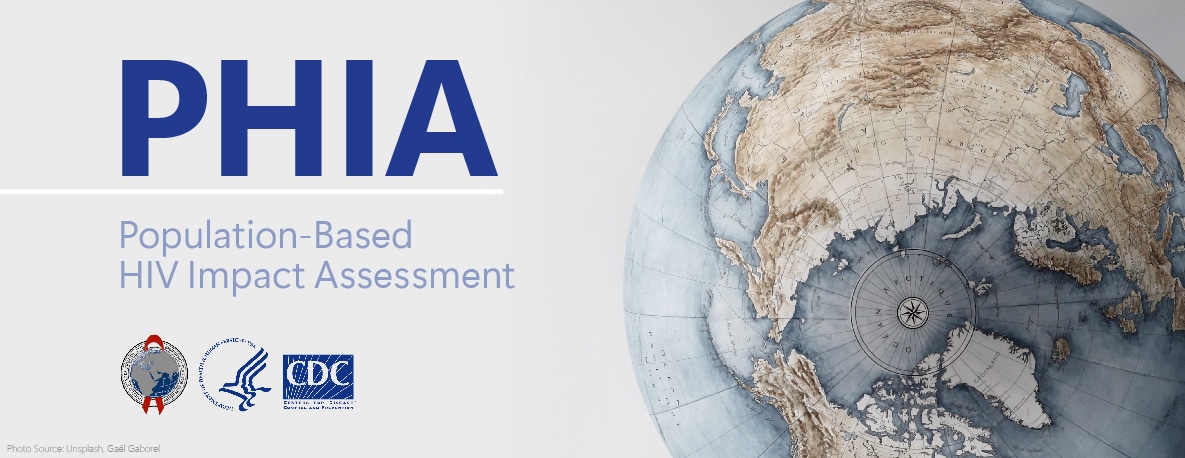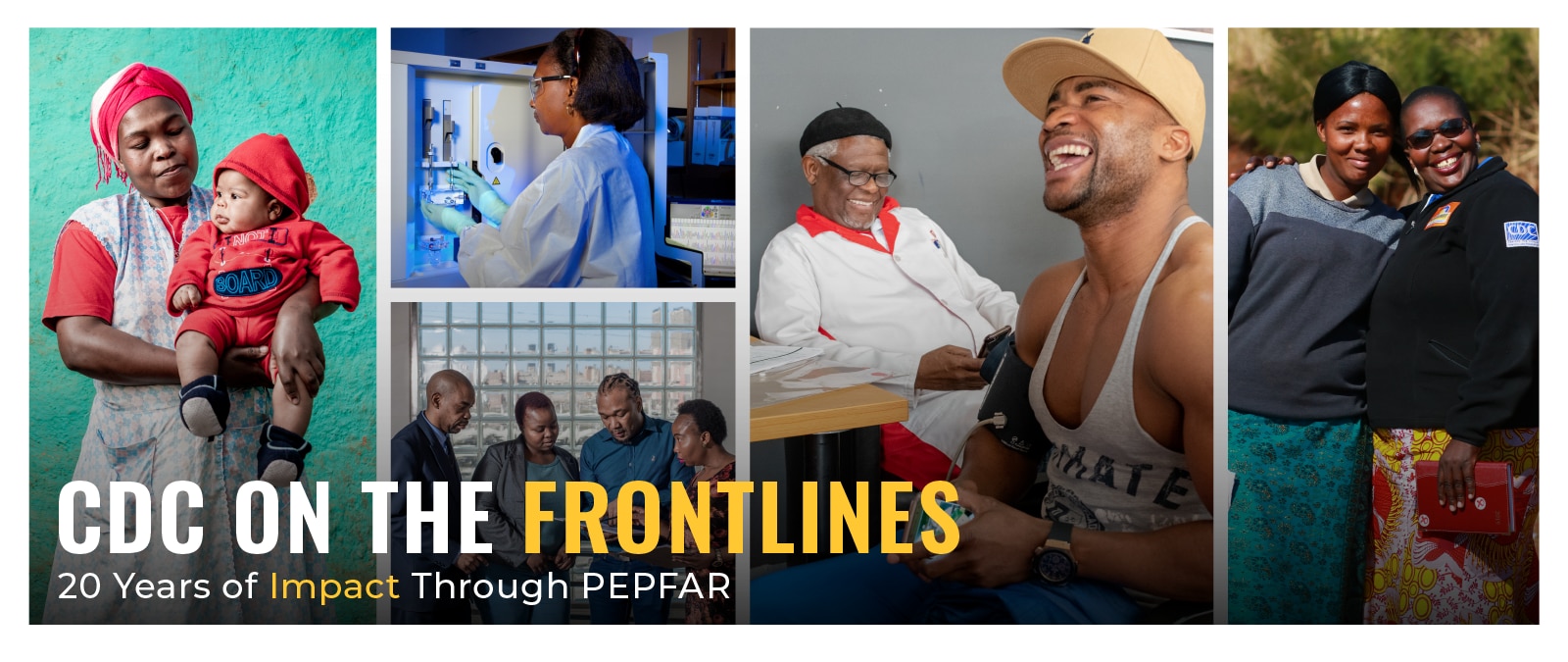Ethiopia Country Profile

Ethiopia Country Profile
Discover more about CDC’s work in Ethiopia by viewing our detailed country profile
Country Overview
CDC established its office in Ethiopia in 2001 and continues to partner with Ethiopia’s Federal Ministry of Health on comprehensive HIV treatment and prevention programs, tuberculosis/HIV coinfection, laboratory systems, and health systems. CDC supports Ethiopia’s efforts to reach HIV epidemic control by improving active case-finding, linkage to treatment, viral load testing, and adherence and retention of existing clients on antiretroviral treatment. Additionally, CDC supports the Ethiopia Public Health Institute to strengthen disease detection and response functions for sustained HIV epidemic control and implementation of an integrated strategic plan for the nation’s laboratories—including workforce development, establishing systems for specimen referral and information exchange, and laboratory infrastructure development.
Per Capita GNI
$1,020
(2022)
Population (million)
123.37
(2022)
Under 5 Mortality
46.8/1,000 Live Births
(2021)
Life Expectancy
65 Years
(2021)
Estimated HIV Prevalence
0.8%
(Ages 15-49): (2022)
Estimated AIDS Deaths
9,800
(Age≥15) (2022)
TB Treatment Success Rate
86%
(2020)
Estimated TB Incidence
119/100,000
(2021)
Estimated Orphans Due to AIDS
310,000
(2022)
TB patients with known HIV-status who are HIV-positive
5.2%
(2021)
Reported Number Receiving Antiretroviral Therapy (ART)
490,004
(Age≥15) (2022)
Strategic Focus
The Centers for Disease Control and Prevention (CDC) Ethiopia office opened in 2001 and works in partnership with the Government of Ethiopia (GoE) to save lives, prevent new HIV and Tuberculosis (TB) infections, and strengthen health systems. Technical assistance is focused on comprehensive HIV treatment and prevention, TB/HIV, laboratory systems, and strategic information.
Reaching HIV Epidemic Control: CDC is supporting the GoE to reach HIV epidemic control by improving active case-finding, linkage to treatment, viral load testing, and adherence and retention of existing clients on antiretroviral therapy (ART). CDC is providing technical assistance to establish a national HIV case-based surveillance system, linked with a public health response to outbreaks or clusters of new cases. This activity is core to monitoring and sustaining epidemic control.
Building Local Partner Capacity: CDC, through partners, provides assistance with HIV transition strategies to achieve epidemic control. Collaborations with Regional Health Bureaus (RHBs) are building capacity for planning, coordination, execution, performance monitoring, and quality improvement of the HIV program. CDC provides support to the Ethiopia Public Health Institute (EPHI) to strengthen disease detection and response functions for sustaining HIV epidemic control, and for implementation of a national integrated laboratory strategic plan, including workforce development, establishing systems for specimen referral and information exchange, and completing laboratory construction.
Key Activities and Accomplishments
ART Services: CDC provided technical assistance to adopt, implement, and scale-up “test and start” strategies including rapid and same-day ART initiation in order to improve linkage to HIV treatment and clinical outcomes of clients. With CDC-support, multi-month scripting and appointment spacing for stable clients is being implemented, and ART regimen optimization was endorsed and adopted into national guidelines. Monitoring and strengthening the quality of clinical services with a focus on pediatrics and adolescents is a key activity moving forward. CDC also provided technical assistance for piloting partner notification services in ART clinics and is supporting scale-up to improve HIV case finding through contact tracing and index case testing.
Prevention of Mother-to-Child Transmission (PMTCT): CDC contributed to the development and implementation of tools and trainings for mother-baby cohort monitoring to improve tracking of maternal and infant outcomes. With CDC-supported programming, fiscal year (FY) 2017, program data shows 992,962 pregnant women were tested and learned their HIV status, and 15,205 HIV-positive pregnant or breastfeeding women received ART to improve their own health and to prevent HIV transmission to their children.
HIV Prevention and Key Populations (KP): According to FY 17 program data, 68,863 sex workers received HIV/Sexually Transmitted Infections (STI) services in confidential sex worker clinics and public health facilities. As part of a strategy for sustained epidemic control and to improve access to services, CDC is supporting the creation of KP-friendly spaces in public health facilities.
TB/HIV: CDC supports GoE efforts to combat TB/HIV-related morbidity and mortality through improving quality of TB/HIV screening and treatment services, laboratory services, and surveillance systems. Renewed focus will be given to scaling-up TB Prevention Therapy (TPT) with the goal of reaching 90% coverage and completion rates among people living with HIV (PLHIV) who are enrolled in care.
Viral Load/Lab: CDC has been instrumental in increasing viral load testing coverage among eligible ART clients from 5% in FY2016 to 54% in FY2017. In Amhara region, an Emergency Operation Center (EOC) was supported and utilized for tracking high viral load results as a public health emergency. This resulted in improved coordination at the lab-clinic interface and timely case management of clients with an unsuppressed viral load at the clinic level. CDC continues to strengthen HIV viral load and early-infant diagnosis scale-up, and optimal utilization of GeneXpert for TB diagnosis among PLHIV.

Tracking PEPFAR Impact Toward Global Targets
The U.S. Centers for Disease Control and Prevention (CDC) works with partners including host countries, local implementing partners, faith-based organizations, and other community-based organizations to measure progress towards HIV epidemic control in countries supported by the U.S. President’s Emergency Plan for AIDS Relief (PEPFAR).

Operation Triple Zero: Empowering Adolescents and Young People living with HIV in Ethiopia
In 2020, about 1.75 million children and adolescents between the ages of 10 and 19 were living with HIV (C/ALHIV) worldwide (UNAIDS 2021). With lifelong, continuous antiretroviral therapy (ART), C/ALHIV can live normal, healthy lives. However, without treatment, they may suffer from severe illness and the majority will tragically not survive into adulthood.

CDC On the Frontlines
Over the past 20 years, the U.S. President’s Emergency Plan for AIDS Relief (PEPFAR) has saved millions of lives as a leader in the global response to two of the world’s deadliest infectious diseases – HIV and TB. As a key implementing agency of the U.S. President’s Emergency Plan for AIDS Relief (PEPFAR), CDC is at the forefront of these global efforts to treat and prevent these diseases.